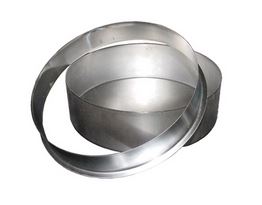 A quick guide to installing shaft repair sleeves
A quick guide to installing shaft repair sleeves
January 14, 2015 REDWIRE is news you can use from leading suppliers. Powered by FRASERS.
Posted by Daemar Inc.
Daemar manages the sourcing and delivery of millions of Essential Components to the manufacturing and MRO marketplace. I... Read more
Subscribe
Free REDWIRE e-newsletter

Over time, sealing lips can cause grooves in shafts due to dirt, heat, excessive water, lack of lubrication and high shaft speeds. DMR Sleeves — precision stainless steel wear sleeves — are designed to prolong the life of damaged shafts and yokes by providing a new sealing surface that is superior to most original finishes and materials. Available from Daemar Inc., DMR Sleeves offer a cost-effective alternative to resizing, metalizing or replacing severely damaged surfaces. Their low-profile design means the same size seal can be utilized, and multi-lip oil seals can be accommodated.
In order for these sleeves to be effective, they need to be installed properly. The following nine tips can help ensure a smooth installation.
1. Make sure all surfaces where the seal contacts the shaft are clean, and file down all burrs or rough spots.
2. Measure the shaft diameter in three locations just ahead of the wear path (not in the wear track formed by the seal). The average diameter should be within the range printed on the box label to ensure sufficient press-fit.
3. Mark the exact location on the shaft where the sleeve must be placed to cover the worn area.
4. If the wear is deep, fill the worn area with metal-type filler and install the sleeve before the filler sets.
5. Place the installation tool over the sleeve.
6. Hammer gently on the installation tool until the sleeve reaches the right location on the shaft.
7. Only if flange removal is necessary: use side cutters to cut all the way to the grooved line (preferably prior to beginning installation), and fold the flange back and forth progressively along the groove to obtain a clean, undistorted break. (The pulling action alone may cause unwanted damage.)
8. Keep the repaired area smooth and free of burrs.
9. Lubricate before installing the seal.
For more details on shaft repair sleeves, proper sleeve installation, and to see a diagram, click here.
Share
Posted by Daemar Inc.
Daemar manages the sourcing and delivery of millions of Essential Components to the manufacturing and MRO marketplace. I... Read more
